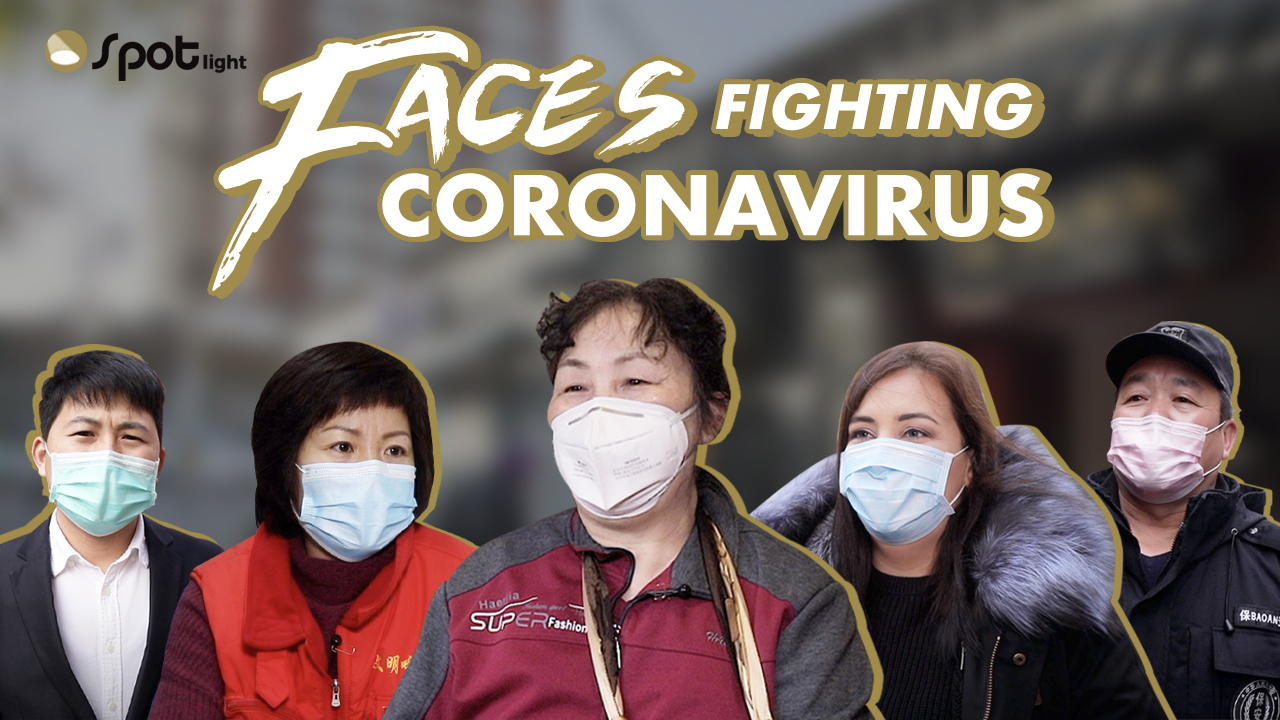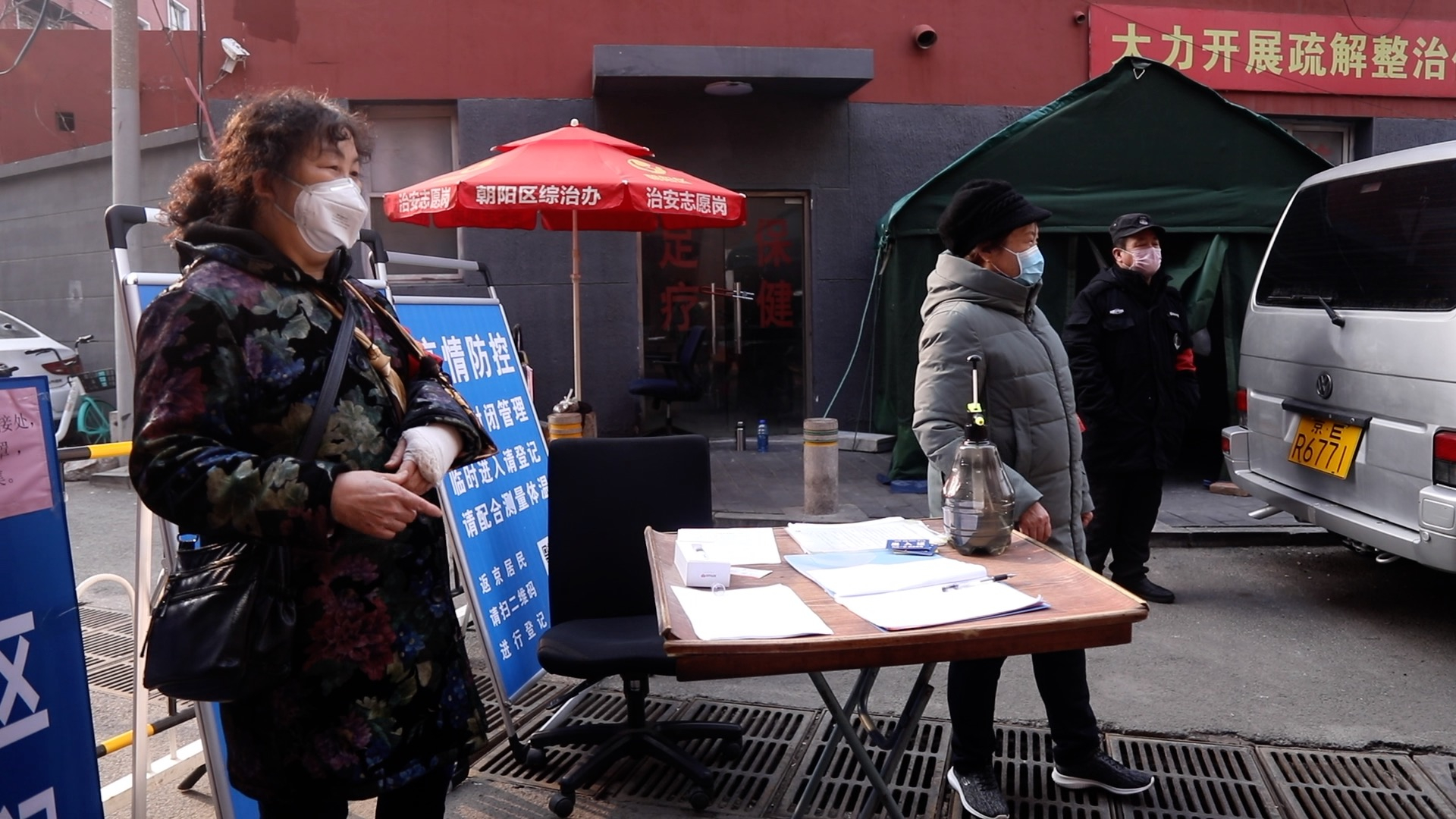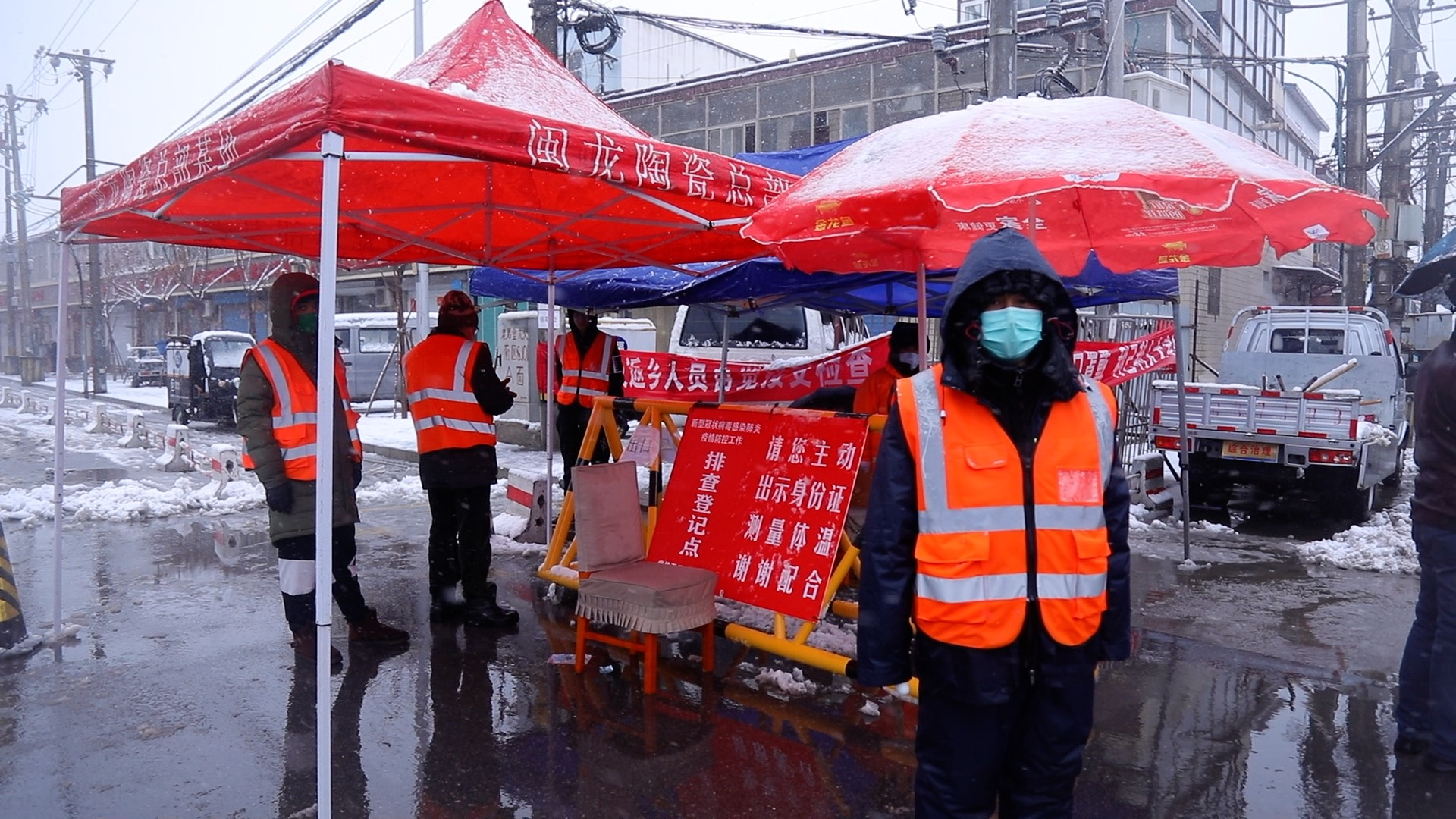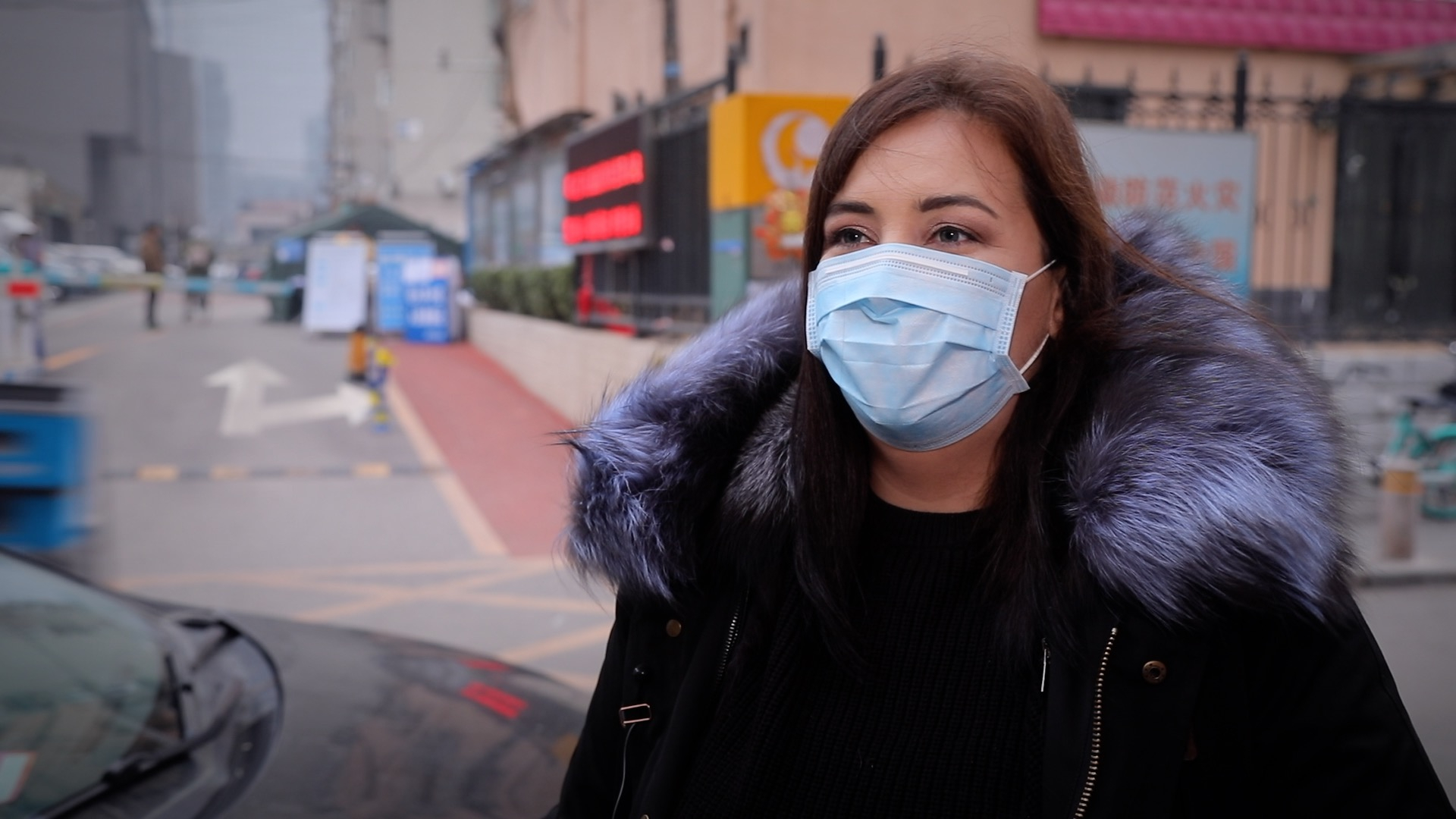03:30

Editor's note:
This is the sixth episode of our series "Faces Fighting Coronavirus" chronicling people from different walks of life who are affected by the outbreak as well as those who are trying to keep their lives as normal as they can to keep our society running. Here you can find the first, second, third, fourth and fifth stories. (Link)
Our sixth episode looks at the measures a residential neighborhood is taking amid the coronavirus outbreak.
This is an outmoded residential compound nestled in the Chinese capital's central business district, surrounded by clusters of shiny skyscrapers. It's composed of 14 buildings and 106 bungalows in between, most of them built in the 1950s and 1960s. In other parts of Beijing, such old-fashioned buildings were torn down to make room for modern, urban architecture. But this community escaped the gentrification upsurge because of its layout and historical circumstances.
Such traits make it much harder to prevent and control the spread of the novel coronavirus here than in its nearby commercial residential properties. Since the coronavirus outbreak sprawled to multiple places outside the ground zero region of Hubei Province in late February, almost all residential compounds in Beijing have undergone partial lockdowns.
"We don't have a property management company to perform these duties like most gated communities," said Zheng Wenxian, the Party Committee Secretary of the community called Guandongdian. "So we can only rely on inhabitants who volunteer to defend their homestead."

Zhao Lirong and her colleagues at one of the 10 checkpoints of the Guandongdian community, in Beijing, China, February 2020. Qi Jianqiang/CGTN
Zhao Lirong and her colleagues at one of the 10 checkpoints of the Guandongdian community, in Beijing, China, February 2020. Qi Jianqiang/CGTN
Zhao Lirong, 66, is one of the volunteers protecting their neighborhood. There are 14 others like her – the majority of them are retired residents with the oldest being 78 years old.
"I've been engaged in the work of the neighborhood committee for 17 years, so I know many of the residents here," Zhao, who retired from bus driving in 2003, told CGTN. Over the past month, she's been watching over one of the 10 checkpoints surrounding the 0.4-square-kilometer compound.
Zhao and her peers are responsible for checking mandatory entry permits and taking the temperatures of residents entering the compound. For those returning from elsewhere, they have to log their recent activity by scanning a QR code at the entrance, allowing the authorities to check whether they or the people they've come into contact with recently traveled to an outbreak zone. For example, if a woman who flew back to Beijing registers with the compound by scanning the QR code, administrators can look at airline databases to see whether she or anybody on her flight had visited an at-risk region or had already been infected.

A checkpoint at the entrance of a village, in Beijing, China, February 2020. Qi Jianqiang/CGTN
A checkpoint at the entrance of a village, in Beijing, China, February 2020. Qi Jianqiang/CGTN
That's a burdensome job, as more than half of the residents among the 2,478 households at Guandongdian – located by the highly-trafficked East Third Ring Road – are tenants from outside the capital. A large number of tenants are returning to work in this megacity after the extended Spring Festival holiday.
In addition, Zhao has to ensure delivery workers don't come inside. Since people are stuck in their homes during the outbreak, online orders have surged, keeping Zhao and other volunteers on a hectic schedule. "But there are exceptions from a human-centered perspective. If an elderly couple orders big cases of water, we’ll let the delivery workers in," she added.
Zhao broke her wrist after heavy snowfall in early February but returned to her post the next day with her arm in a cast. "It's just the hand. As long as I can still stand on my feet, I'll come to lend a helping hand."

Margaret, an international kindergarten teacher from Ireland, talks to CGTN, at a checkpoint of the Guandongdian community, February 20, 2020. Qi Jianqiang/CGTN
Margaret, an international kindergarten teacher from Ireland, talks to CGTN, at a checkpoint of the Guandongdian community, February 20, 2020. Qi Jianqiang/CGTN
A security guard is also stationed at each checkpoint. Zheng Chuanxi was transferred to the compound earlier this month to handle conflicts, such as those arising from someone refusing to have their temperature be taken. This is the first Lunar New Year that Zheng didn't go back home to Shanxi Province during his five-year stay in Beijing. "I'm lucky – I cover only the day shift. It’s toilsome for those on the 14-hour night shifts," he said.
Aside from guarding the checkpoints and ensuring daily sterilization procedures, the community also provides mental guidance for panicked residents. "Some elderly people, especially those who live alone, are prone to fear when they don't feel well."
Zheng has been working in the community since 2003, when the Severe Acute Respiratory Syndrome, or SARS, affected cities throughout China. "Back then, people were not as panicked as they are now. It's probably because news circulates extremely fast nowadays, including misinformation that leads many astray," she said.
Margaret, an international kindergarten teacher who has been living in Beijing for five-and-a-half years, feels the same: "It's hard to tell what's true and what's not; there are lots of rumors and it's hard to find out the real news."
The Irish native told CGTN that her parents asked her to go back home and wait until everything is fine. But she chose to stay. "From being here, I know it's serious, but it's not as serious as what they're reading from the media at home. I think it's harder for them because they can't see what's going on here day to day. I think everything will be okay soon."
Video director: Qi Jianqiang
Article written by Wang Xiaonan
Cover image designers: Yin Yating, Sa Ren
Supervisor: Zhang Shilei